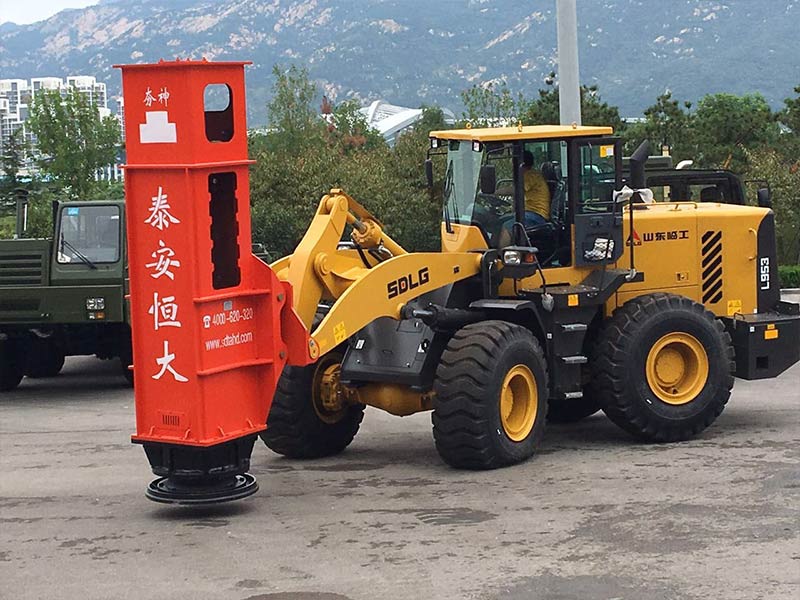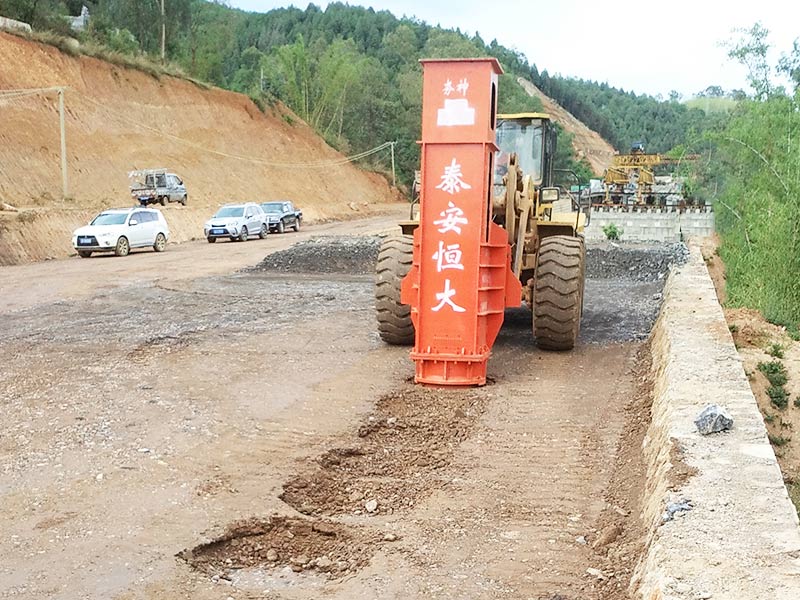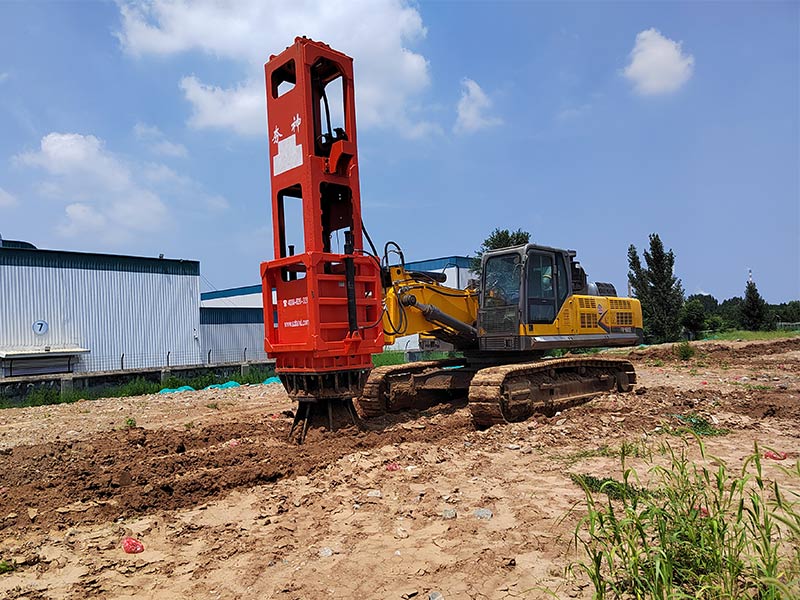What is a rapid impact compaction? How many hammers are suitable for ramming in the construction of rapid impact compactor?
updatetime:2022-08-30 16:19:44 pageviews:347views
Rapid impact compaction is also called "hydraulic compactor", "impact compactor", "hydraulic impact compactor", etc. It is a compaction machine that uses equipment force and variable force to reduce sand and soil, including excavator hydraulic compactor And loader hydraulic compactor. The rapid impact compactor can be directly installed on the loader or excavator, which is flexible and flexible, and the corner does not need to be treated with a small compactor; the working depth is large, and it can backfill 1~4m at a time, which greatly improves the construction efficiency; it reduces the need for small compaction equipment and Manpower investment reduces the repeated utilization rate of compaction equipment and greatly reduces construction costs; rapid impact compaction has a soft effect, strong and uniform penetration ability, and it is not easy to form surface induration in the treatment of the base layer, and a more uniform density can be obtained in a larger depth range; rapid impact compaction machine can complete the compaction work, reducing the investment of small equipment and the repeated backfilling of compaction equipment.

The rapid impact compaction is divided into several models and specifications, and at the same time, it is divided into three working gears: strong, medium and weak. In addition to the differences in the characteristics of soil layers in roadbed engineering, there will be no "standardized" requirements for the number of hammers for one ramming. . The number of hammers of the rapid impact compaction equipment must be tested and tamped to be finally determined.
Rapid impact compaction machine test tamping is usually carried out on the specific construction site. The actual tamping point test is: 1 gear with 9 hammers, 12 hammers and 15 hammers for tamping; 6 hammers, 9 hammers, and 12 hammers are set for compaction; after compaction, the degree of compaction is measured, and finally the compaction work is performed according to the qualified gear and the matching number of hammers.
Test compaction can be carried out according to the following procedures:
1. Preparation for the test in advance: The test subgrade engineering section must be tested according to the compaction specification and flatness specified in the design before the ramming. After the inspection meets the standards, the arrangement of the impact compaction points can be carried out. For the subgrade engineering section of the test compaction, the leveling and rolling of the site before impact compaction shall be carried out according to the preparation of the new project before construction. When the surface of the filling layer is dry, water should be properly sprinkled to prevent the surface layer from becoming soot and jeopardizing the transmission of kinetic energy to the deep layers.
2. Compaction layout: Release the compaction points on the foundations that are under construction and tested according to the compaction specifications specified in the design, mark them with lime and number them, and then measure the original elevation of each point according to the serial numbers. The rapid impact compaction is in place according to the precise measurement of the construction stakeout position, so that the rammer points to the positioning point.
3. The rapid impact compaction machine is divided into three working gears: strong, medium and weak according to its tamping performance. Adjust the hydraulic press impact tamper to the respective gear, tamping according to the different hammer count records, and accurately measure the downward movement of the tamping point. and record.
During construction, according to the conditions of the construction site, whether there are tunnels and pipelines as shown below, and whether the adjacent structures have impact force restrictions, etc., the construction stalls can be effectively selected.
4. Take every 3 hammers as a group, accumulate and record the precipitation amount of each 3 hammers.
5. Repeat 3-4 new items until the 6th, 9th, and 12th hammers that match the design plan are impacted, and the sedimentation amount of every 3 hammers is accumulated and recorded.
Determine the number of working hammers according to the test, and refer to the test data of the construction site in the past, and finally confirm which gear and the number of tamper hammers match the actual effect of the tamping work. It should be noted that the high vibration frequency of the weak gear can also achieve satisfactory actual results. , it is not that the actual effect of strong gear consolidation is necessarily the best.

6. After the single ramming point reaches the ramming requirements, the loading and transferring machine starts the ramming of the next point, usually using the parallel line method. The construction site of the rapid impact compactor is often seen on the back road of the drainage project. In order to facilitate the movement of the mechanical equipment, the parallel line working method is suitable, that is, each time the shot is fired, the forward or backward work is performed at the next point.
7. The gap-type working surface layout is suitable for the construction of the rapid impact compaction equipment: the edge of each tamping point is spaced at a certain distance, and the points are set in an equilateral triangle.
The small distance between the edge of the rammer on the working face of the rapid impact compaction equipment and the bridge and culvert structures should be determined according to the on-site test. According to the main parameters of the test, it is proposed that the distance between the rammer core and the structure at the row construction point can be set to 80cm, that is, the distance between the edge of the rammer and the structure is 30cm, which can ensure the safety of the structure.
If the above test methods are selected, if the construction regulations cannot be met, the frequency of tamping can be appropriately increased. If the frequency of tamping cannot reach the standard after a certain frequency of tamping, consideration should be given to changing the construction plan.

How many hammers does a rapid impact compactor have? In addition to the selection of suitable construction and processing technology, it is also necessary to integrate the advantages and characteristics of the rapid impact compaction itself. The environment and the construction of the secondary highway standards and density regulations are used to make decisions, and the final decision is to obtain specific information and actual effects based on the test and consolidation.

